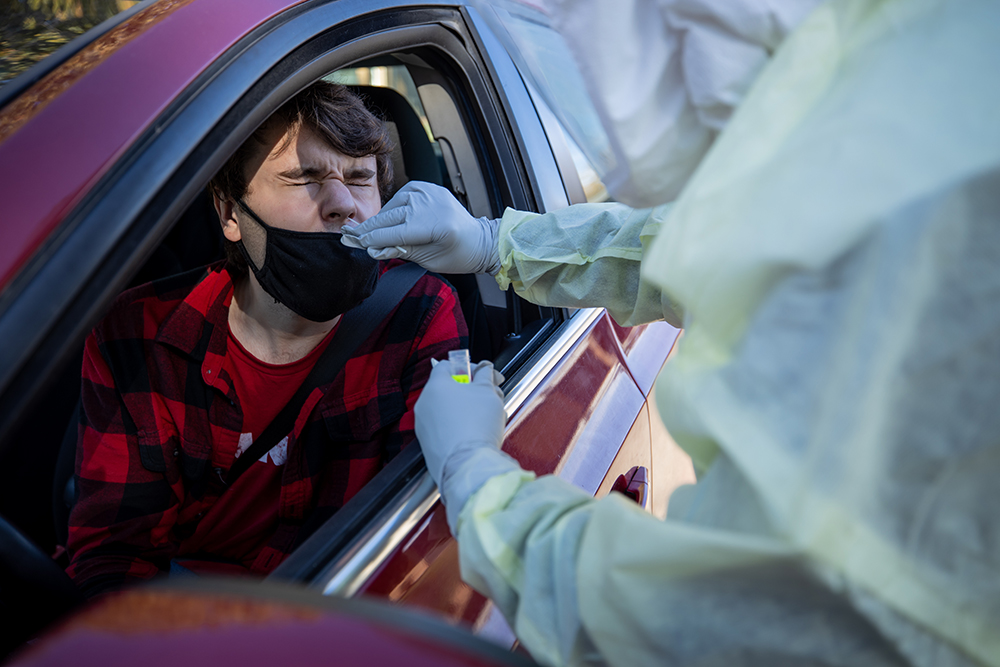
USD spring semester COVID plans and vaccine rollout
The spring semester is underway, and while classes and professors may change from the fall, one thing hasn’t. The COVID-19 pandemic is still a threat to campus life and classrooms, yet USD is prepared to handle any outbreaks and the upcoming vaccine rollout this spring.
As students are welcomed back to campus all staff and students are required to abide by the guidelines set up by the USD COVID-19 task force. These include face coverings in all indoor public spaces, practicing social distancing, reimagined campus activities, the USD Sentinel Testing program for free drive-thru COVID tests and the Wellness Center opening in Phase 1.
These measures are put in place to avoid a spike on campus, which happened in Sept. during the fall semester. However, members of the COVID-19 task force are very optimistic by next fall campus life will be back to normal.
The decision to open the campus back up for the spring in Phase 3 was based off of the fall semester, Kevin O’Kelley, assistant VP for compliance, said.
“We found that we were able to prevent transmission of COVID-19 from student to student in the classroom,” O’Kelley said. “We found the classroom was not a vector of transmission of COVID-19. (There were no cases from a student getting sick from a professor or the other way around. There was little transmission from student to student in the same class. We don’t know if these students also socialized, but found that the classrooms were safe.”
The goal for 2021 is to avoid another COVID surge. In order to avoid that asymptomatic testing is available for all students courtesy of the University. During the fall semester, in order to receive a test students were required to be presenting multiple COVID symptoms.
“Now the testing is widely available and free. We have had thousands of students get tested, and the asymptomatic ones that are sick are the ones that get other people sick. It’s the cases that are sick and don’t know it that are spreading it around to others. Now we are able to nip that in the bud greatly,” O’Kelley said.
The university itself is not vaccinating any students. However the South Dakota Department of Health will collaborate with the South Dakota Board of Regents to determine population numbers for vaccines, according to the Department of Health.
The different phases for COVID-19 vaccine rollout determine when staff and students can receive the vaccines. As of Jan. 18 the state will enter into Phase 1D which includes those 65 and older, including university staff and faculty in that age range. Certain USD students may already receive vaccines due to their work or underlying conditions. USD nursing students were able to receive their first round of the Moderna vaccine Jan. 15.
“I was excited to receive my vaccine because I am going to be working on the COVID floor for my last semester of nursing starting in February,” Gabi Gillana, senior nursing major, said. “The vaccine didn’t hurt, but the next day there was a small lump and red circle around the vaccination site and my arm was a little sore.”
Even though vaccinations are beginning to make their way through the USD population the University will not change any safety precautions until every that wants a vaccine receives one, O’Kelley said.
“When you get vaccinated we still need to wear a mask. All of the precautions we’ve been taking need to continue because we do not know who has been vaccinated. For example, if someone can pick up the virus from person A, receive the antibodies but not get sick, but pass on the virus to person C. Some diseases work that way and some do not but we don’t know about COVID yet,” O’Kelley said.
The student and campus body need to stay vigilant because the virus can still do a lot of damage to shut the campus down but the end is in sight, Kurt Hackemer, provost and vice president for academic affairs said.
“But if we can be careful one more semester we can stay open and we can hope for a much more normal fall for the next academic year.” Hackemer said.
Currently USD is operating classes with 95% of classes with a face to face component and two thirds completely face to face, above the national normal, Hackemer said. According to the COVID-19 dashboard there are 17 active cases on campus.


